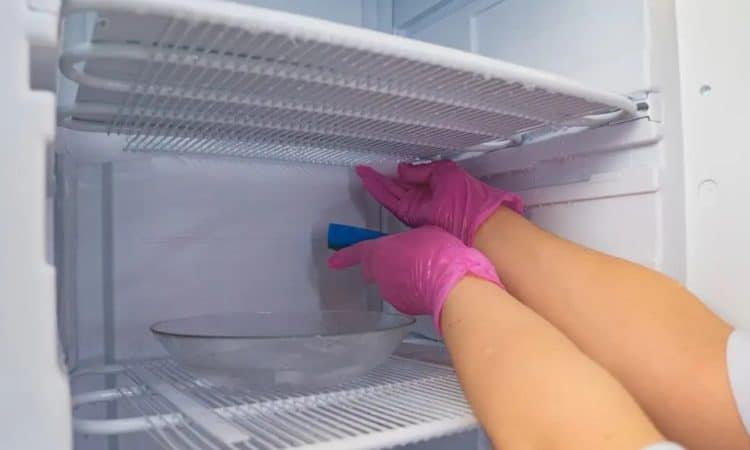
How Long to Defrost Your Fridge and the Correct Method
To know how long it takes for your refrigerator to defrost, you need to consider the type of appliance you have. It also matters how much ice has built up and whether your fridge is using more electricity than usual. Here’s how long it takes to defrost and the correct method to use.
Why Defrosting Your Fridge Is Important
Defrosting your fridge is essential to keep it running properly. Removing the layer of ice inside ensures it continues to work optimally, cools stored food effectively, and doesn’t consume more electricity than necessary.
How Long to Defrost the Fridge and Why It’s Important
Knowing how long to defrost your refrigerator helps maintain its efficiency.
The defrost time depends on several factors, primarily the type of fridge you have. If it’s a classic fridge without an automatic defrost function, you may need to defrost it once a month or more often if there’s a significant ice buildup.
On the other hand, if your fridge is more modern and has a No Frost function, defrosting can be done once a year. In addition to defrosting, it’s also a good idea to sanitize the fridge regularly.
Note: No Frost fridges have the advantage of forming ice more slowly or not at all. They should be defrosted according to the manufacturer’s instructions. A general rule recommended by manufacturers of all types of refrigerators is to defrost as soon as the layer of ice reaches 3 to 4 millimeters thick.
If the ice inside the refrigerator exceeds this thickness, the fridge will no longer cool food efficiently, will consume more electricity, and will become difficult to clean.
The Correct Way to Defrost Your Fridge
Before defrosting your refrigerator, consult the user manual to ensure you follow the correct steps and safety precautions. Start by unplugging the fridge. Then leave the doors open to let warm air circulate inside.
Next, remove food from the fridge and decide what to keep or discard. Remember that defrosting the fridge is a natural, slow process, best done overnight. Ensure your food is stored correctly and will last until you can return it to the fridge.
Remove drawers from the fridge and clean them. The best way is to wash them thoroughly with liquid dishwashing detergent in the bathtub. Melted ice will leave a lot of water around the fridge, so use trays, rags, or towels to prevent accidents or water buildup.
Once the ice has melted, clean and sanitize the refrigerator. Use a solution of one teaspoon of baking soda mixed with half a liter of water for cleaning. Dip a washcloth in the solution and thoroughly wipe the fridge. For sanitizing, vinegar can be used in the same manner.
After the fridge is dry, wait until it reaches the ideal temperature range of 2 to 4 degrees Celsius before returning the food.
How to Defrost Your Fridge Quickly
There is a way to defrost your fridge more quickly. Place a container of hot water inside the fridge and close the door. The steam will naturally melt the ice, and the process can take between 30 minutes to an hour, depending on the ice’s thickness.
Every 10 minutes, check the melted ice, remove it, and refill the container with hot water.
Caution: The hot container can damage refrigerator components. Place a towel under the container and ensure there’s enough space inside to prevent it from touching the refrigerator walls.
How to Defrost the Freezer
Defrosting the freezer follows the same steps as the food compartment.
The only difference is in how you clean the freezer. Once defrosted, use a washcloth soaked in lukewarm water and all-purpose detergent to wash the walls.
Only once the freezer is sanitized and dry should you return the food. Wait until the internal temperature reaches minus 15 degrees Celsius.
Defrosting and drying the freezer should be done naturally, without rushing the process. Be careful not to damage the freezer drawers. If they are completely frozen, do not force them; instead, wait for them to thaw naturally.

